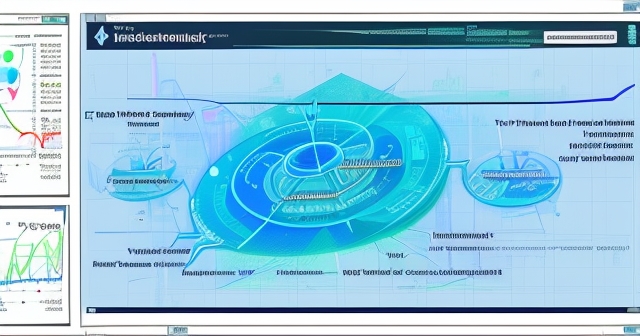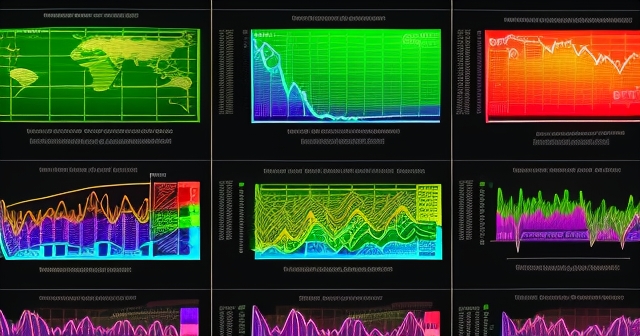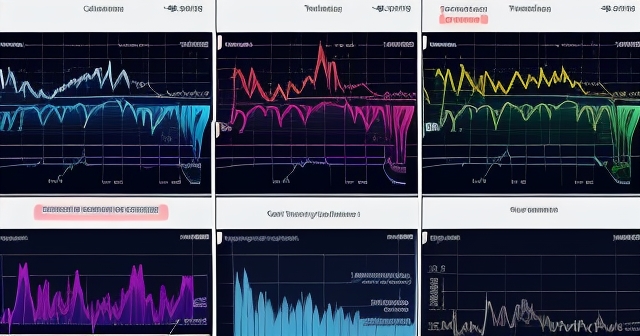The Pulse of the Economy: Understanding the Money Supply
Welcome to our exploration of the money supply – a fundamental concept often discussed but sometimes misunderstood. Think of the economy as a complex organism, and the money supply as its bloodstream. Just as blood circulates, carrying vital nutrients and oxygen, money flows through the economy, facilitating transactions, investment, and growth. Understanding the money supply isn’t just for economists; it’s crucial knowledge for any investor or trader aiming to navigate the financial markets effectively. Why? Because changes in the money supply can influence everything from inflation and interest rates to asset prices and the very rhythm of the business cycle. Join us as we break down this vital concept, explaining what it is, how it’s measured, who controls it, and why its traditional significance is evolving.

At its core, the money supply is the total amount of currency, coins, and other highly liquid assets circulating within an economy at a specific time. It represents the pool of funds readily available for spending and short-term investment. While this sounds simple, the definition of “highly liquid assets” can vary, leading to different measures of the money supply.
- The money supply includes funds held in various types of bank accounts that can be easily accessed for payments.
- Most transactions happen electronically, using debit cards, credit cards, bank transfers, or checks drawn against balances held in deposit accounts.
- Understanding the money supply helps gauge liquidity in the financial system and assess potential economic pressures.

Central banks, like the Federal Reserve in the United States, the Bank of England in the UK, or the Reserve Bank of India (RBI), are tasked with tracking and influencing the money supply. They publish regular data on its size and composition. This data helps policymakers and analysts gauge the liquidity in the financial system and assess potential economic pressures, particularly related to inflation or deflation.
Think of it like measuring the total amount of water available in a city’s reservoir system – including not just the water in the main pipes, but also in accessible storage tanks and even easily accessed smaller cisterns connected to the system. Each measure captures different levels of accessibility or “liquidity”.
The Different Measures: M1, M2, and Beyond
Because different types of liquid assets exist with varying degrees of ease of access, economists and central banks categorize money supply into various “monetary aggregates.” These are typically labeled M0, M1, M2, M3, and sometimes M4, arranged in increasing order of breadth (less liquid assets are included in higher M numbers).
| Measure | Description |
|---|---|
| M0 / Monetary Base | This is the narrowest measure, often referred to as the monetary base. It includes physical currency in circulation plus commercial banks’ reserves held at the central bank. |
| M1 | This includes M0 plus transaction deposits at depository institutions, as well as travelers’ checks and demand deposits. |
| M2 | This includes everything in M1 plus less liquid forms of money that are still relatively easy to access, such as savings deposits and retail money market mutual fund shares. |
| M3 & M4 | Broader measures that include even less liquid assets, used by some countries. The Fed discontinued M3 publication, feeling M2 was sufficient. |
The distinction between these measures is important because they represent different levels of liquidity. M1 is the most liquid, reflecting money used for day-to-day transactions. M2 includes M1 plus savings and other easily accessible funds, representing a broader pool of potential spending power. Policymakers monitor these aggregates to understand the overall liquidity conditions in the economy.

Each measure gives us a different perspective on the amount and type of purchasing power available in the economy. M1 tells us how much money is immediately ready to be spent on goods and services. Monitoring these can offer insights into consumer and business behavior, savings habits, and the overall health of the financial system.
Historically, economists believed that changes in M2 had a strong and predictable relationship with nominal Gross Domestic Product (GDP) and inflation. This historical relationship formed a cornerstone of macroeconomic analysis for decades, influencing how central bankers thought about controlling the economy.
However, as we’ll discuss later, the reliability of these relationships has diminished significantly in recent decades. But understanding the different measures is still foundational. It helps us appreciate the varying degrees of liquidity in the system and provides context for how the total stock of money is composed, from the most spendable cash to slightly less accessible savings.
For an investor or trader, while directly trading based solely on M2 numbers is no longer common or advisable, understanding what money supply measures represent helps you understand the language central bankers and macroeconomic analysts use. It’s part of the broader economic picture that can influence market sentiment and policy decisions, which in turn impact asset prices.
The Guardians of the Money Supply: Central Banks
The primary responsibility for managing and influencing the money supply rests with the economy’s central bank. In the United States, this is the Federal Reserve (the Fed). Their role is critical because the amount of money circulating impacts key macroeconomic variables that central banks are mandated to manage, such as price stability (controlling inflation) and maximizing sustainable employment.
| Central Bank Tool | Description |
|---|---|
| Open Market Operations (OMO) | Involves buying or selling government securities to influence the money supply. |
| Discount Rate | The interest rate at which commercial banks can borrow from the central bank. |
| Reserve Requirements | The fraction of deposits that banks must hold in reserve and not lend out. |
| Interest on Reserve Balances (IORB) | The interest rate paid to banks on reserves held at the Fed, influencing their willingness to lend. |
Central banks don’t print money indiscriminately. Instead, they influence the money supply indirectly, primarily by affecting the behavior of commercial banks and the availability of credit in the economy. They act as the bankers’ bank and the government’s fiscal agent.
Consider the central bank as the conductor of an orchestra. It doesn’t play every instrument, but it sets the tempo, volume, and overall direction, ensuring harmony (economic stability). The commercial banks and the public are the musicians and the audience, whose actions are guided by the conductor’s signals (monetary policy).
The goals of the central bank’s money supply management are typically enshrined in its mandate. For the Fed, this is often described as the “dual mandate”: achieving maximum employment and stable prices. Managing the money supply is a key lever used to try and achieve these goals.
Understanding the central bank’s role and its tools is essential for predicting potential shifts in monetary policy, which can have significant repercussions across financial markets, including stock markets, bond markets, and currency exchange rates.

If you’re looking to trade financial instruments, understanding the ripple effects of central bank actions is crucial. If you’re considering exploring leveraged products like CFDs or participating in the forex market, platforms that offer access to a wide range of global markets and currencies can be beneficial. If you’re exploring options, Moneta Markets offers over 1000 financial instruments, including major and minor currency pairs, making it a platform worth considering for both beginners and experienced traders.
Tools of the Trade: How Central Banks Influence Supply
Central banks influence the money supply through several key monetary policy tools. These are the primary mechanisms they use to expand or contract the amount of money and credit available in the economy. Think of these as the dials and levers on the central bank’s control panel.
| Tool | Description |
|---|---|
| Open Market Operations (OMO) | This involves the central bank buying or selling government securities in the open market. |
| The Discount Rate | This is the interest rate at which commercial banks can borrow from the central bank. |
| Reserve Requirements | The fraction of deposits that banks must hold in reserve and cannot lend out. |
| Interest on Reserve Balances (IORB) | The interest paid on reserve balances held by banks at the Fed, influencing lending behaviors. |
The main tools include:
- When the central bank buys securities, it injects money into the banking system, increasing reserves and expanding the money supply.
- When the central bank sells securities, it drains money from the banking system, reducing reserves.
- A lower discount rate encourages lending and can expand the money supply, while a higher rate discourages borrowing.
- Lowering reserve requirements means banks can lend out a larger portion of their deposits, increasing the money supply.
- Adjustments to the IORB rate influence banks’ incentives to hold reserves versus lending them out.
Understanding how these tools work provides crucial insight into the central bank’s strategy and potential future actions, which are closely watched by market participants.
Money Supply and Economic Vibrancy: The Link
The relationship between the money supply and the overall health and activity of the economy is a central theme in macroeconomics. Historically, economic theory posits a strong causal link: changes in the money supply influence key economic variables like interest rates, inflation, and economic output (GDP).

Here’s the traditional chain of thought:
- Money Supply and Interest Rates: An increase in the money supply generally leads to lower interest rates.
- Interest Rates and Investment/Consumption: Lower interest rates make it cheaper for borrowing, stimulating investment and consumption.
- Investment/Consumption and Economic Growth: Increased investment leads to higher demand, boosting overall economic activity and lowering unemployment.
- Money Supply and Inflation: A rapid increase in the money supply without a corresponding increase in goods and services can lead to inflation.
This traditional framework suggests that managing the money supply is a powerful tool for stabilizing the economy. Central banks can use expansionary monetary policy to fight recessions and unemployment, and contractionary monetary policy to fight inflation.
Historical Perspectives: When Money Supply Ruled
For much of the 20th century, particularly from the post-World War II era through the early 1990s, monetary aggregates, especially M2, were closely watched economic indicators. The relationship between M2 growth and subsequent movements in nominal GDP and inflation appeared relatively stable and predictable, at least compared to other economic indicators.
Economists, particularly Monetarists, argued forcefully that controlling the growth rate of the money supply was the most effective way to control inflation and promote stable economic growth. During this period, significant interest rate volatility occurred as the Fed focused on controlling the quantity of money rather than directly targeting interest rates.
This era was characterized by the strong and stable links between money supply measures and economic conditions, allowing for effective forecasting and policy guidance.
A Shifting Paradigm: The Fading Reliability of Money Supply
Despite its historical importance, the direct, predictable relationship between money supply measures and key economic variables began to weaken significantly starting in the early 1990s. This has led central banks to place less emphasis on monetary aggregates as reliable forecasting tools.
- Financial innovation blurred the lines between different M measures, changing the “velocity of money.”
- Changes in central bank policy and operations altered the financial landscape, especially post-2008.
- Changes in financial regulation affected lending behavior and the money multiplier.
- Factors like foreign demand for U.S. currency can cause fluctuations in money supply measures.

This changing landscape requires traders to look at a wider array of indicators. Understanding money supply is foundational, but it’s crucial to also analyze interest rates, credit spreads, market sentiment, and more to form a comprehensive picture.
Ultimately, while the direct link between money supply aggregates and economic outcomes is less clear than it once was, understanding the concept of money supply remains fundamental. It provides essential context for grasping how monetary policy works, how central banks influence financial conditions, and how liquidity flows through the economy.
For you, as an investor or trader, this means moving beyond just glancing at M2 charts. It requires analyzing a wider range of indicators to enhance your understanding of economic dynamics and informed decision-making in your trading strategies.
Conclusion: Understanding Money Supply in the Modern Era
We’ve journeyed through the definition, measurement, control, historical significance, and evolving relevance of the money supply. We started by understanding what counts as money – from physical cash to various forms of liquid deposits captured in aggregates like M1 and M2. We explored the vital role central banks play in managing money and credit and learned about various tools they employ to influence the economy.
As the economy continues to evolve, so does the understanding and analysis of the money supply. This knowledge equips you better to navigate the complexities of financial markets while working towards achieving your investment objectives.
money supply definitionFAQ
Q:What is the money supply?
A:The money supply refers to the total amount of currency, coins, and other liquid assets circulating in an economy at a specific time.
Q:How do central banks influence the money supply?
A:Central banks use tools such as open market operations, the discount rate, and reserve requirements to manage the money supply and influence economic conditions.
Q:Why is understanding the money supply important for investors?
A:Changes in money supply influence inflation, interest rates, and asset prices, making it crucial for investors to understand the economic environment and market sentiment.
